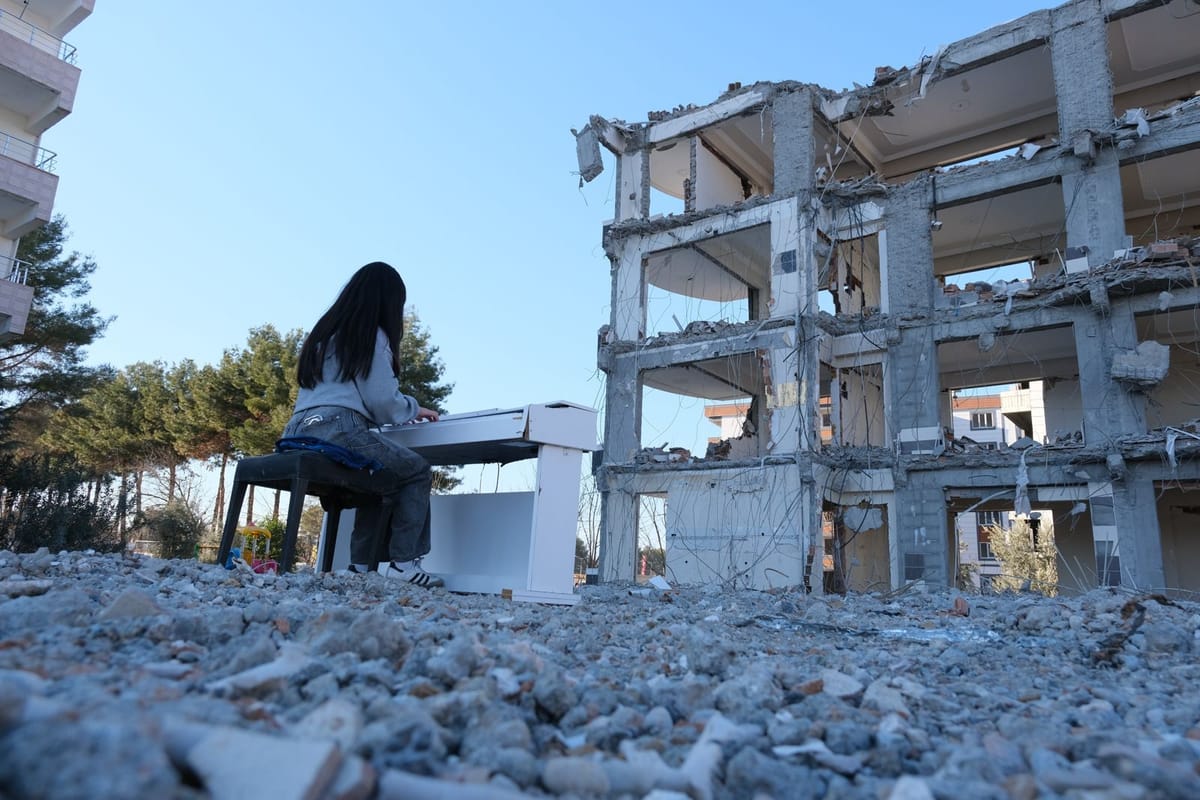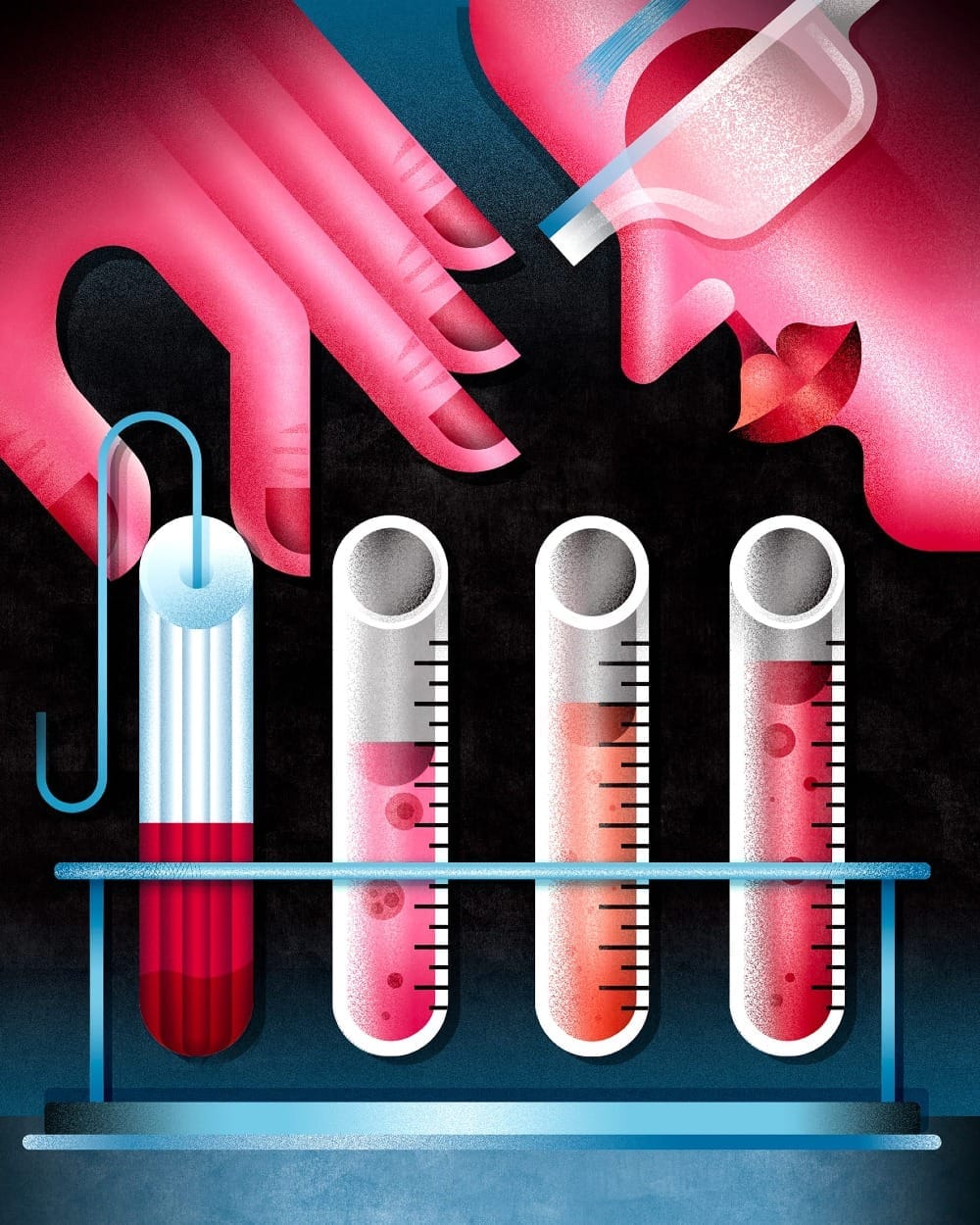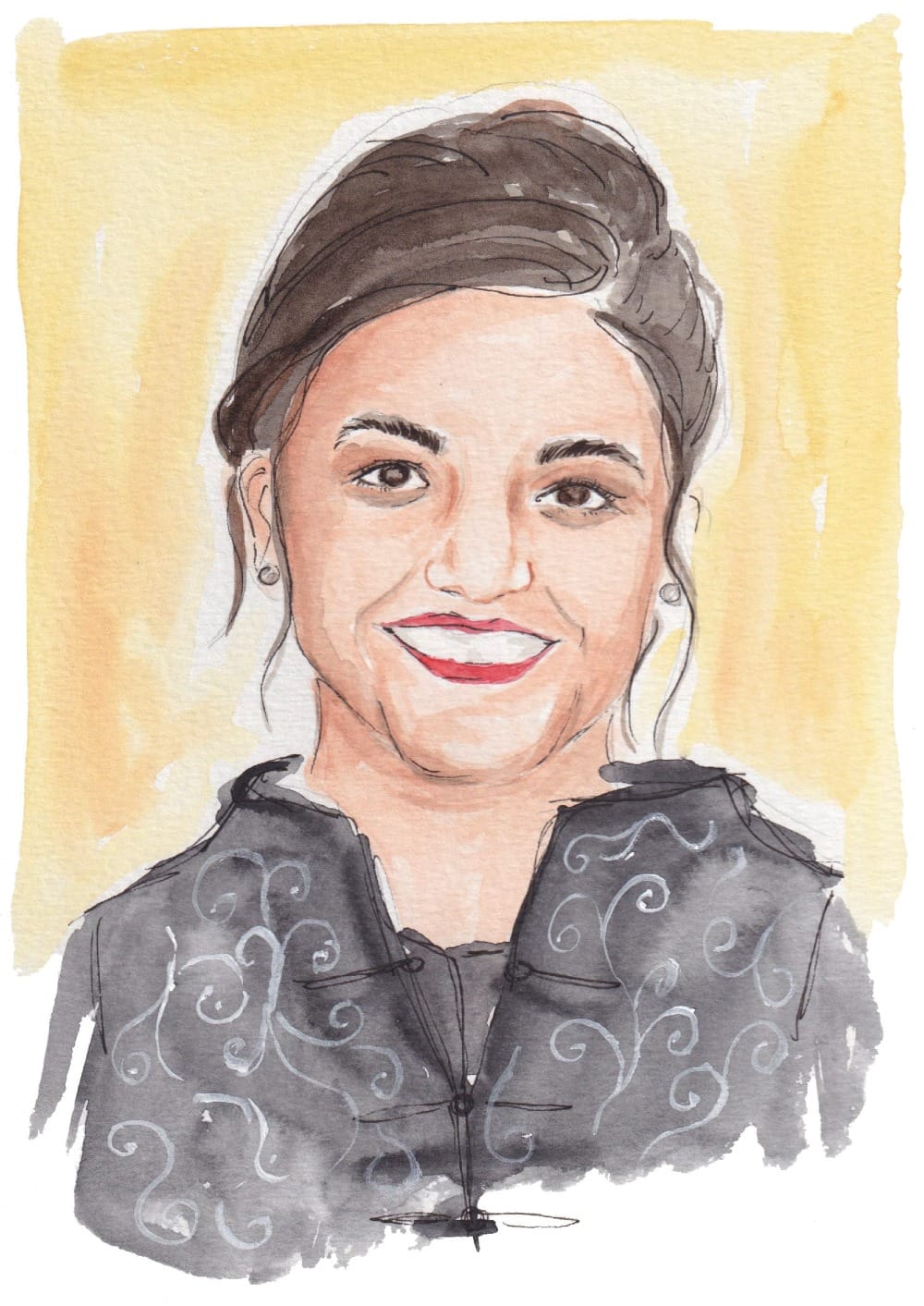‘A Scar That Stays With Us’—Two Years After a Devastating Earthquake, a Refusal to Be Forgotten
Two years after a 2023 earthquake devastated swaths of Syria and Turkey, lives are still being rebuilt. Women bear the brunt of it.

When she was just 13, Dicle Hayat Dağdeviren’s life was upended. A massive, 7.8 magnitude earthquake flattened most of her small hometown of Adiyaman in southeastern Turkey. You certainly read about the earthquake in the news. It ravaged Turkey and Syria. It killed over 60,000 people across both countries. It was February, 2023.
Shielded by her father, the teenager, now 16, survived the earthquake, but it took the lives of her mother and brother. “We were a beautiful family, but it is just the two of us now,” Dağdeviren told The Persistent. “I also injured my legs. My legs have healed, but my emotional wounds will take longer,” she added.
In Adiyaman alone, over 8,000 were confirmed dead.
Crisis workers say the actual toll of the earthquake may be higher. “Last year, a whole year after the earthquake, they found another body while cleaning the debris of one of the collapsed buildings,” Dağdeviren told me, while taking me and another journalist on a tour of her beloved, beleaguered town.
Signs of the tragedy are visible all over the city of 300,000. Large mounds of rubble are piled up at the sides of the roads. Buildings that were partially destroyed by the earthquake stand precariously like a pack of cards, waiting to be fully demolished. New construction is happening fast, but not fast enough to replace the many homes destroyed. The air is filled with dust from the construction.
While the destruction has been awful for everyone, it is the women and girls of Adiyaman who remain the most affected. Women in this conservative town not only find their lives upended but are also forced to take on additional roles with the emotional and physical labor of keeping their families together. While men focused on rescue efforts and later on finding jobs, the responsibility of securing shelter—usually in makeshift metal containers—became a woman’s job, one city official observed.
At the same time, people like Dağdeviren have found themselves trying to re-capture some of their lives—anything—from before the destruction. For Dağdeviren it comes in the form of her piano.
Encouraged by her parents, she started learning the piano at the age of 6 and knew she wanted to pursue a career as a musician. After the earthquake, as she lay in the hospital bed, injured and unsure if she would ever walk again, the loss of her piano felt like losing a close friend. She shared her thoughts with her father. He returned to their ruined home, and with the help of neighbors, fished her damaged piano out from the rubble. He spent days fixing it before video-calling her in hospital to show her the piano. “It felt like reuniting with my best friend,” she told me tearfully.
The Burden on Women
The Turkish government has spent nearly $75 billion on rebuilding efforts, but as of February 2025, just 200,000 of the needed 650,000 rebuilt homes have been delivered. The result is that many families, including many in Dağdeviren’s home town, find themselves living out of shipping containers which serve as makeshift homes.
Just outside the city centre of Adiyaman, 35 settlements house over 70,000 people in containers, explains Selma Kara, press advisor to Adıyaman Mayor Abdurrahman Tutdere. For a while, Dağdeviren found herself among this number, though she and her father have since moved out.
The container spaces are small, rife with infrastructure problems like poor electricity, and usually shared between several family members, including many residents who now have special needs following injuries from the earthquake. While some containers have a small section segregated to serve as an indoor toilet, most container communities rely on the use of a common toilet allotted to them, raising concerns about disease. Women are expected to undertake all domestic activities, including cleaning, cooking, as well as caregiving, within these closed quarters. “Suicide rates, substance abuse, and domestic violence have all increased dramatically in these areas,” Kara said.
Dağdeviren and her father have been some of the luckier ones as far as living goes. For a while, they too lived in a container but have since moved to pre-fabricated home built on the land where their family home once stood. It’s an improvement, though it doesn’t have electricity, or water or heating connections. (They rely on outside sources for water, batteries for electricity and for warmth, they use traditional coal heaters.) “It’s not the same as before, but we are a small family now. And this is a safe and comfortable home,” Dağdeviren says. She’s also back in high school and hanging out with her friends.
Still, the memories stay with her.
“Life in a container is very hard. People who live there lost everything, they are starting [their lives] from scratch, while also dealing with trauma, emotional and physical,” Dağdeviren said. It is especially harder for women, she adds.
“Women were impacted in different ways than men, and the recovery has also been different, if not harder,” Dağdeviren said.
For instance, women in Turkey are generally in charge of maintaining the household, which means that they are responsible for cooking, cleaning and other housework, which can be immensely challenging while living in a small metal container, she said.
Kara added in agreement. “In addition to increased household responsibilities, many have lost loved ones, some are now living with disabilities, or are caregivers for disabled family members. The psychological toll on women has been immense, as their responsibilities make it harder for them to recover from the trauma.”
And two years after the earthquake there are still almost no social spaces for women to interact, commune and socialize with one another. Indeed, it’s more than just socializing: It’s about offering support, companionship, advice and hands-on help in difficult times. Being cut off from these aspects of community leaves them feeling very vulnerable. And under these conditions, it’s hard to hang on to hope, she explains.
Suicide rates, substance abuse, and domestic violence have all increased dramatically in these areas, Kara points out. “Several NGOs, the Ministry of Family and Social Services, the governor’s office, and the municipality have teams providing support, but these efforts are not enough, nor can they reach everyone in need,” she said, warning that the long-term traumatizing effects of the earthquake will persist unless urgent measures are taken.
“Everyone in the city struggles with psychological distress,” Kara said, “but especially women and children.”
‘After the Darkness’
Dağdeviren is trying to turn the negatives into positives: Working with fellow survivors, volunteering at a daycare so moms can do their work, playing her music, and mostly trying to ensure that the lives of women in the earthquake-affected areas remain visible.
She has channeled much of her energy into making a documentary, “Karanlıktan Sonra” or “After the Darkness.” With training from industry experts, Dağdeviren, along with an all-female crew, produced a short documentary in an effort to raise awareness about the situation of the Turkish women living in these container cities.
The film, which chronicles the lives of four women survivors from Adiyman as they navigate their lives in the container cities, was released last month on the anniversary of the earthquake.
“The women we interviewed are so strong,” Dağdeviren says. “You will see in the documentary how they sit with their emotions but don’t let them affect others. We wanted to highlight this strength of the women in our movie,” she said.
Envisioned by Kara, the project brought together a crew of 19 women survivors, aged between 16 (Dağdeviren is the youngest) and 65, and gave them the tools to share these stories. While the crew interviewed other women survivors, their own experiences of coping with the loss and trauma, brought a unique perspective, too.
Women in Adıyaman have historically been silent due to the conservative social structure, Kara explained. But it became so much worse after the earthquake, “particularly in securing shelter.” “It made their voices even less heard,” Kara said.
“We are 19 women [in the production crew] and none of us had worked with a camera before or production of any kind, or conducted interviews before. But all of us shared the same experience; with each other and the women we interviewed. That connected us,” Dağdeviren explained.
The project is, of course, deeply personal. “I stayed in a container for a while, and that's why I understand what they're going through very well. It is very hard to get back to normal while living like this,” Dağdeviren said.
Healing With Music
Dağdeviren also provided music for the project, under the guidance of, and with arrangements by, pianist Ozan Sarıboğa. And that—getting back to music—she said, has been another big part of her recovery.
At a screening of the documentary at the Adiyaman town hall, Dağdeviren performed live for an audience of fellow survivors, breaking down in tears towards the end, to a standing ovation from an equally teary crowd.
Her music in general, and of course for the movie, has been an enormous part of her healing. It has helped Dağdeviren come to terms with her loss and trauma. “My mother was a very positive woman and she taught me how to appreciate it, and my father has always supported me in every way which makes music such a beautiful thing for me even in tragedy,” she said, adding that she plans to continue studying in university and pursue it professionally.
“Losing a parent and sibling can really change you. When you pass through the neighborhood, you remember a lot of things. Everything reminds you of something. The pain doesn’t go away, but it made me stronger,” she said, choking back tears. “I want to share that strength with others.”
On the eve of the screening, as she dashed from one task to another, it was hard to tell that Dağdeviren had suffered such serious injuries in the disaster.
It’s even harder to grasp that the otherwise cheerful high-schooler with a bright smile is still recovering from the emotional trauma of her loss. “We can do everything to heal, but there will always be a scar that stays with us,” Dağdeviren says.
“But working with these women helped me heal a little bit. And I think all of us exchanged healing with each other in some way,” she says.











